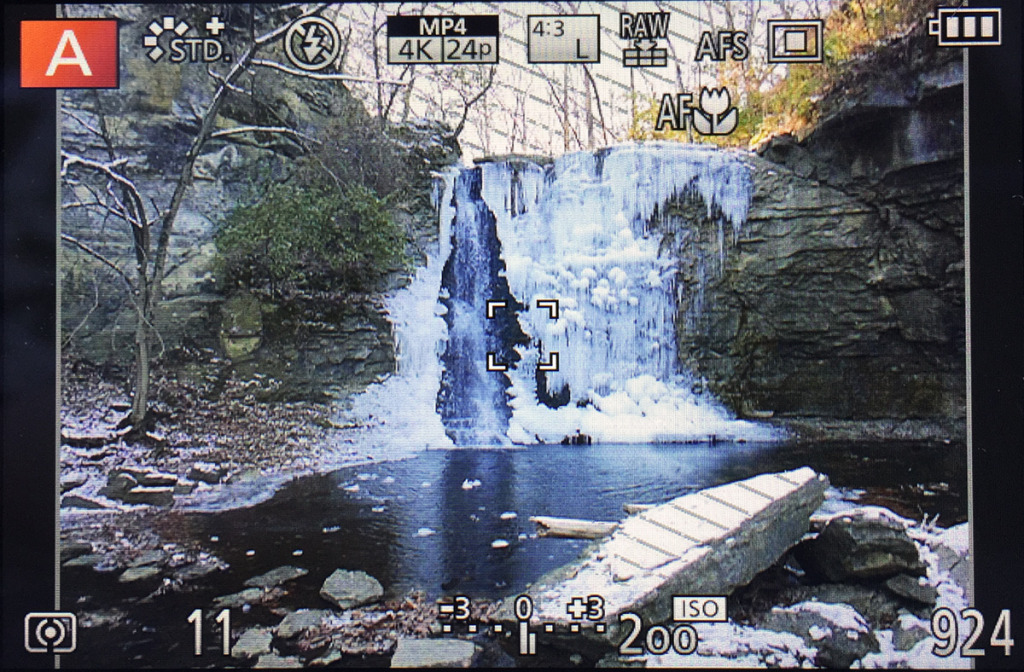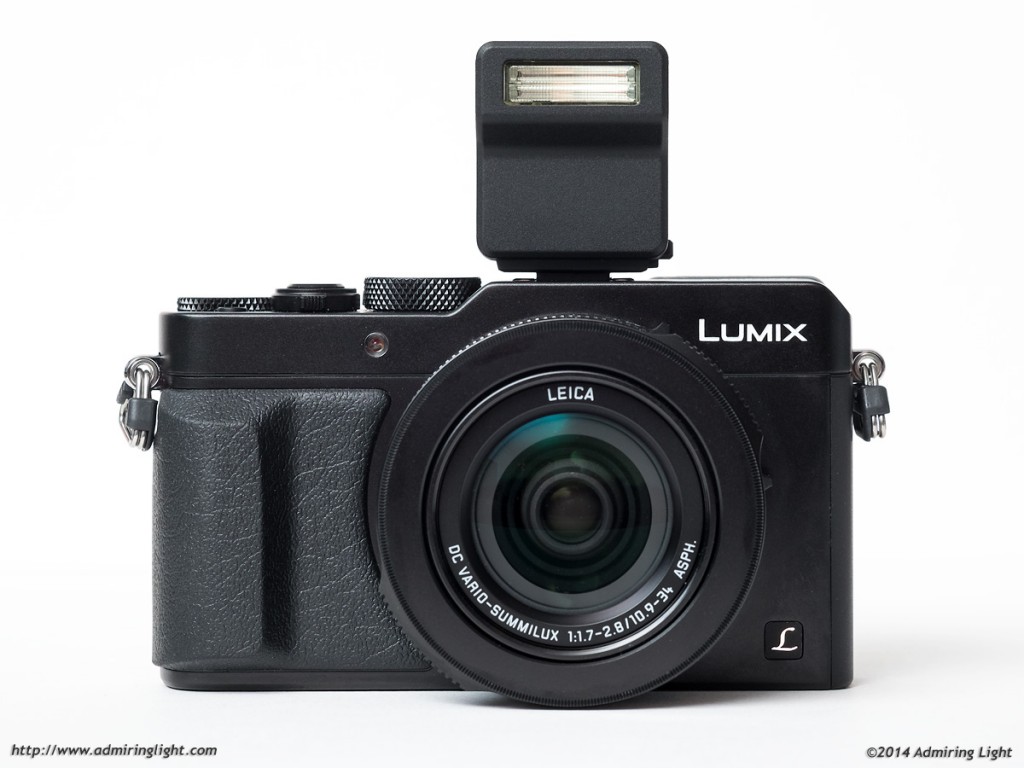Electronic Viewfinder and Rear Screen
The LX100 features a corner EVF like a lot of recent compacts and small mirrorless cameras, though the one on this camera is a bit nicer than several of its closer competitors. The LX100’s EVF is a 2.79 million dot (effective) EVF, though it uses a sequential display. The result is a viewfinder that is extremely clear and detailed, though it can show color artifacts when panning the camera quickly. The viewfinder isn’t huge, at an effective 0.63x magnification (in full frame terms), but it is similar in size to something like the Olympus OM-D E-M5 or the Fuji X-E2, and notably larger and more detailed than something like the Sony RX100 III and especially larger than Panasonic’s sister interchangeable lens GM5.
In real world use the EVF is quite good, with extremely low lag, low noise in dim light and quick refresh. The only real downside is the fact that it’s a 16:9 viewfinder, so if you’re shooting in 4:3 aspect ratio, the view will be pillar boxed and quite a bit smaller than when shooting at the wider aspect ratios. When utilizing manual focus, by default an enlarging square comes up in the middle of the viewfinder that shows the enlarged area in the center of the frame with the full framing surrounding it. As a result, manual focus using the EVF is quite nice.
The rear screen on the LX100 is a 920,000 dot screen that is clear and has fairly good color and contrast. As I mentioned earlier, I do wish the screen tilted and swiveled, and I very much wish it was touch capable. However as a display it works just fine. In harsh daylight, the rear screen can be somewhat difficult to see, especially off-axis.

While the displays are quite good overall, the biggest problem I encountered was somewhat of a disconnect in apparent brightness in the viewfinder and actual exposure, especially when shooting outside. The viewfinder seems to show a brighter image than what will be recorded. As a result, I often backed off exposure thinking that I was overexposing, and when I imported the photos to look at them, I found I had underexposed by nearly a stop. What made this more frustrating is that this occurred when using the zebra stripe feature to show blown highlights, set to 100%. (Panasonic offers to show the Zebra striping at 80%, but this is all but useless).
Performance and Autofocus
The LX100 operates fairly quickly for the most part. The only major delays in operation are a short delay upon turning the camera off and on while the lens retracts, and slow zoom operation. Otherwise, the camera is quick and responsive. Files are written quickly, shutter lag is short and EVF refresh is quite nice. I never found myself waiting on the camera during general use. As I said, the only real exception to this is the zoom speed, which is no faster than any other compact camera. I was hoping zoom operation would be more along the lines of modern power zoom lenses such as the Sony 18-105mm f/4 G, but that may have been hoping for too much. Still, I have to think that zoom operation could be sped up at least a little.
One quirk of the camera happens when reviewing images. After looking at images for a short while (in the neighborhood of 15 seconds or so), the lens will retract. This isn’t ideal, but it’s not too bad. What is bizarre is if you shut the camera off after this happens, the camera will extend the lens back out, then pull it back in to shut it off, adding several seconds where you can’t stash the camera back in your pocket or a bag.
Autofocus on the LX100 is similar to the recent Panasonic Micro 4/3 cameras, and features the excellent Depth By Defocus system as found in cameras like the GH4. Focus is extremely fast and, for the most part, extremely accurate. A few times, especially in lower light or when the AF Macro mode is engaged, the camera would think it was in focus when it was extremely out of focus. This didn’t happen often enough to be a problem, however, and the good news is that it’s blatantly obvious in the viewfinder when this occurs, so you won’t be missing shots unless you’re not paying attention.
Continuous autofocus was quite impressive in the limited amount of time I had to test it out. The camera can easily track most subjects with ease, and maintain good accuracy and a high hit rate. The 11fps burst mode and 5fps with live view will come in handy for the occasional action shot, though due to the limited zoom range, this isn’t a camera that is likely to see much use for sports shooting.
Clip-On Flash

The LX100 lacks a built-in flash, but the camera comes with a small flash that clips into the hotshoe and is powered by the camera. While the clip-on flash sits higher than most built-in flashes, it still is a small, forward facing flash. As a result, while red-eye won’t be too much of a problem, the harsh direct-flash look of a typical compact is still present.
The LX100 also had a problem with my Metz 50 AF-1 flashgun that I use with my Micro 4/3 cameras. While it worked fine in manual mode, it was unable to utilize TTL flash with the LX100, which I found rather disappointing. Perhaps this flash isn’t compatible with the leaf shutter of the camera. However, one great thing about the LX100 is that leaf shutter enables high-speed flash sync, of 1/2000s maximum when at wide apertures, and 1/4000s at f/4 and smaller. This can be a great camera to use with an external flash for use outdoors in full sunlight, even at wider apertures.





Leave a Reply